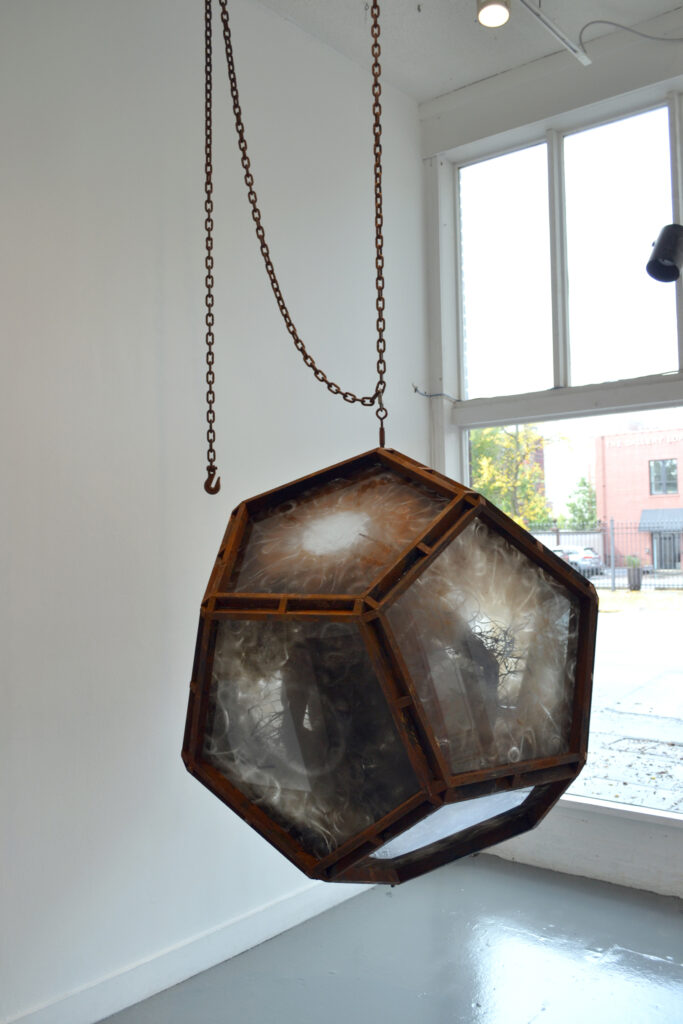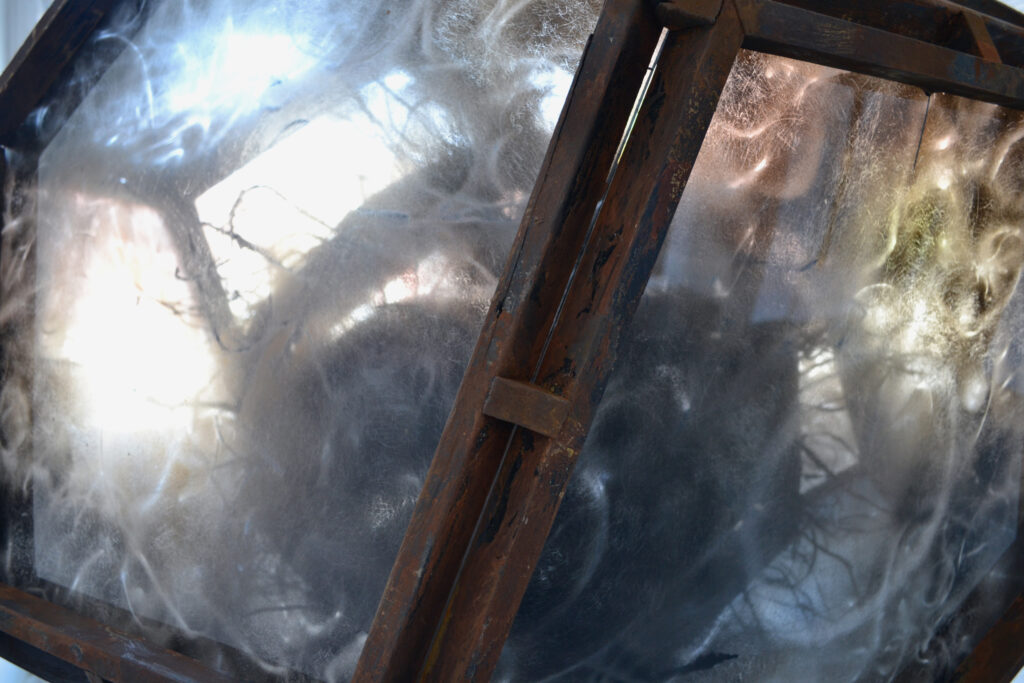Drawn Together, 35th Anniversary Exhibition I
I’m interested in the constant and redemptive nature of change as opposed to change as loss. As an artist, reimagining waste material into sculptural form becomes a small act of remediation. I find myself simultaneously concerned with and fascinated by the waste stream routinely encountered in my daily orbit. I gravitate toward materials with distinct physical qualities: shredded fragments of rubber tire strewn along highways, stark white architectonic EPS foam packaging protruding from commercial dumpsters, transparent plastic bottles accumulating in recycling receptacles or the reflective foil interior of food packaging filling waste bins. By-products of unsustainable systems, these materials are found devoid of function, in need of agents of change.
My recent sculptures and installations rely on geometric structures and abstract organic forms to frame my re-examination of materials culled from the waste I encounter. The polygonal forms of Platonic and Archimedean solids evoke structures found in microscopic toxins, virus’s, carbon allotropes, sacred geometry, futuristic architecture and celestial objects. They imply a continuum between molecular and interstellar space. Organic forms resembling hives, pods and nests suggest futuristic adaptations to environmental pressures addressing ideas around evolution and the potential for change to breed new solutions.
“Star Seed” belongs to a recent body of work titled “Syzygy”. The word syzygy can refer to the alignment of celestial bodies or to the pairings of connected or corresponding things. “Star Seed” considers potentiality. The form, a dodecahedron, is the Platonic solid that once represented the idea of an orderly Universe. Its rigid framework holds each roiling facet in check. The surface draws one into the implied energy contained within. Alien yet tangible, does the object signify wonder or menace? Is it on the verge of implosion or expansion? Would it function as an implement for creation or destruction? Is the potential of one force the inescapable consequence of the other in a larger cycle of change?
Randy Gachet earned a BFA, concentrating in sculpture, from Birmingham Southern College in 1987. In 2002, Mr. Gachet joined the visual arts faculty at the Alabama School of Fine Arts in Birmingham. Gachet’s work is consistently exhibited in galleries, non- profit spaces and museums throughout Alabama and the Southeastern region. His work has been featured in solo exhibitions at the Lowe Mill Arts and Entertainment Center in Huntsville, AL, the Johnson Center for the Arts in Troy, AL and the Wiregrass Museum in Dothan, AL. Gachet’s sculptures and installations have been included in Digital Graffiti 2013, Alys Beach, FL, HomeGrown Southeast Exhibition 2007 at the Southeastern Center for Contemporary Art, Winston-Salem, NC, Questions to the New South: Politics, Politics, 2006, Space One Eleven, Birmingham, AL,the Red Clay Survey of Contemporary Southern Art, 2000, 2007 and 2017, Huntsville Museum of Art in Huntsville, AL. and the John and Joyce Cadell Sculpture Garden, Montgomery Museum of Fine art, Montgomery, AL. Awards received include 2009 Art Teacher fellowship from the SURDNA Foundation, 2008-2009 Individual Artist Fellowship from the Alabama State Council on the Arts, merit awards from the 2007 and 2004 Kentuck Arts Festival, merit award from the 2013 and 2004 Magic City Art Connection, the Spirit of the South Award from the 2004 Art with a Southern Drawl juried exhibition at the University of Mobile and an award of merit from the 2000 Red Clay Survey :Seventh Biennial of Contemporary Southern Art. Gachet’s work can be found in public collections, including the Huntsville Museum of Art, the Wiregrass Museum of Art, UAB Comprehensive Cancer Center and the Southern Environmental Center at Birmingham Southern College, as well as, private collections across the country.
Space One Eleven Involvement: Group Show 1990; Politics, Politics 2006; Windows 2016


